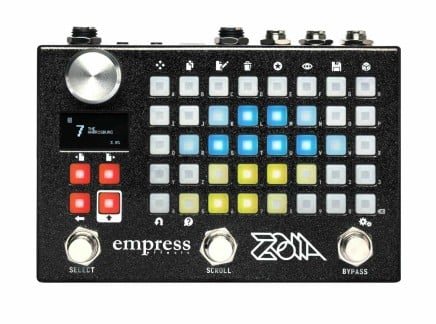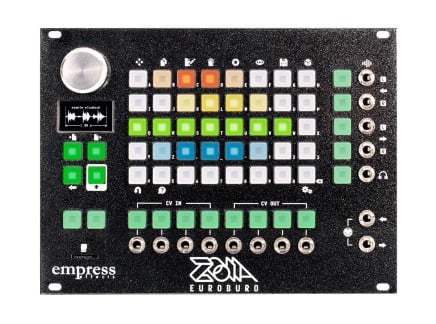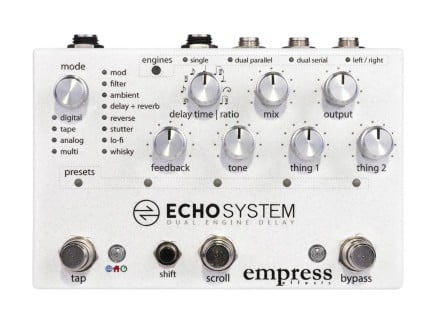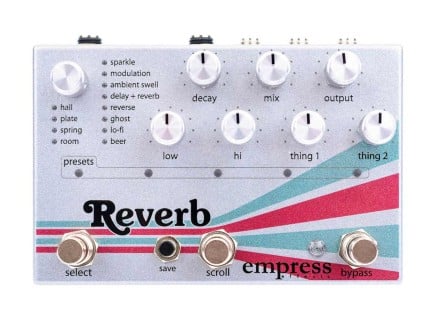Mitch from Empress Effects came by our shop to demonstrate the ZOIA: a much-anticipated device which houses all the power and functionality of a full-fledged modular synthesizer into the unassuming form factor of a pedal. But don't let the size fool you—ZOIA is much more than just a simple effect processor.
Walking through the process of building a patch from scratch, Mitch makes it clear just how much the ZOIA can do—from processing to synthesis to MIDI generation, the possibilities are vast.
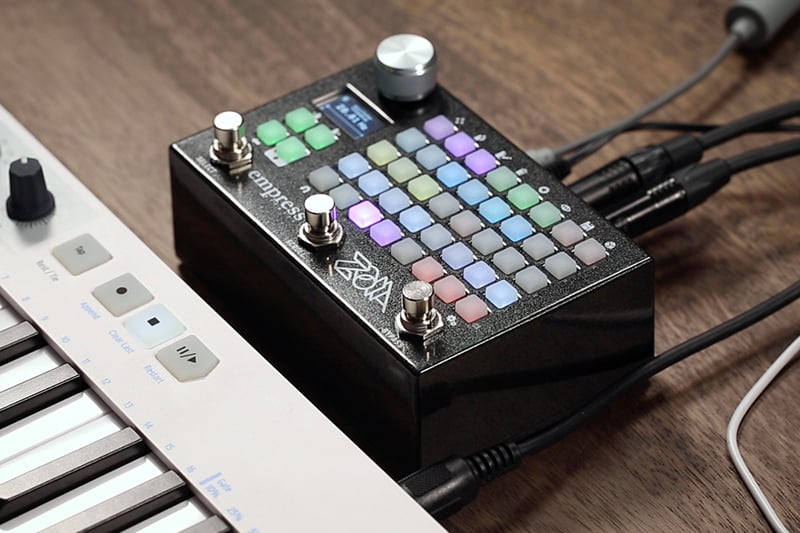
What is ZOIA?
ZOIA is a multi-function device capable of both sound processing and sound generation. Rather than focusing on providing a dedicated UI for accessing delay or reverb effects, for instance, ZOIA instead provides a general-purpose grid of buttons used to interact with internal virtual "modules." By chaining together these internal modules, users can design their own effects and instruments, and even save them as presets—making ZOIA not dissimilar to a modular synth with full patch storage capability (which, needless to say, is often not practical in the context of actual modular systems). To better understand its potential, ZOIA's internal modules can be broken down into five categories: Interface modules, Analysis modules, Audio modules, CV modules, and Effects.
Module Types in ZOIA
Interface modules control the way data comes into and leaves the ZOIA. These modules provide access to the ZOIA's several audio I/O jacks, UI controls (footswitches, etc.), MIDI jacks, expression/CV input, and more. ZOIA can respond to and produce both MIDI messages and control voltages—meaning that it can easily integrate into virtually any electonics-based setup.
Analysis modules interpret internal audio into control signals used to modify the behavior of other modules. Analysis types include onset detection, envelope following, and pitch detection, making it possible to use external sound sources to control ZOIA's internal behavior—or to control external devices via the CV and MIDI jacks.
Audio modules are where a synthesist's ears will really begin to perk up. Audio modules range from basic synthesis functions like oscillators, noise, filters, and VCAs to utility synthesis functions like switches, crossfaders, mixers, and panners all the way to advanced effects like granular processors, pitch shifters, and delay lines. These are the core of synthesis-based ZOIA patches, providing easy access to all the raw components of many modular synthesizers and beyond.
CV modules produce virtual control voltage in order to manage the behavior of other modules. Again, many of these virtual CV functions will be familiar to modular synthesists: LFOs, sequencers, ADSRs, sample & hold, random generation, quantization...the list goes on. It's exciting to see Empress include more esoteric functions here—things like CV delay, flip flops, comparators, slew limiters, rectification. The potential for extensive control is huge, breaking well beyond the modulation capabilities of the typical guitar pedal and into the realm of complex modular synths and computer music applications. ZOIA can do straightforward synths and effects, but it can also be used to build entire generative ecosystems and everything between.
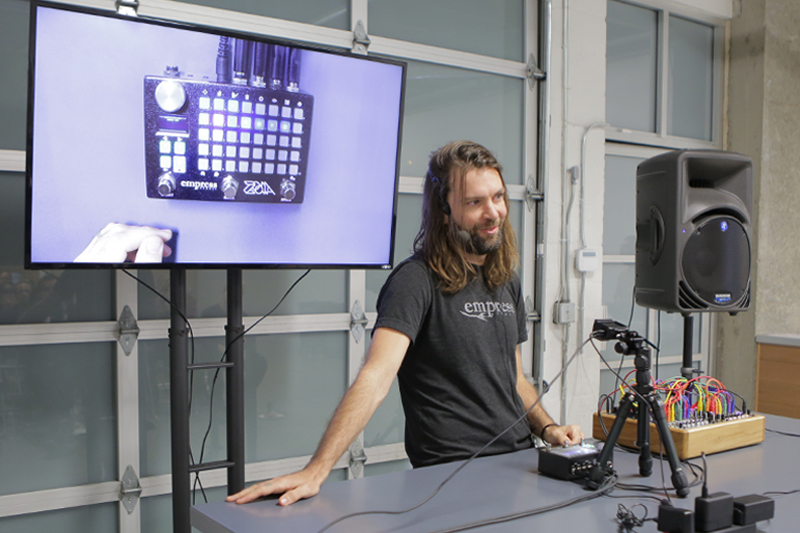 Mitch from Empress Effects explaining the ZOIA
Mitch from Empress Effects explaining the ZOIA
ZOIA's Effects modules primarily represent more traditional effect processing types: delays, reverbs, distortion/fuzz/OD, phaser, ring mod, cabinet simulation, etc. Given Empress's track record of producing excellent-sounding effects, this portion of ZOIA alone is worth the price of entry: when considered relative to devices advertised as "multi effect pedals," ZOIA not only sounds incredible, but offers far greater flexibility in a much smaller footprint. Even if you were just to use it as a delay/reverb/chorus/etc., ZOIA could replace an entire pedalboard worth of dedicated effects...and then some.
It's no surprise that Empress would make an excellent-sounding pedal; but there aren't many devices out there that offer this sort of sheer flexibility, especially within ZOIA's price range and footprint. A lot of people have already claimed that ZOIA is the world's most powerful pedal, and honestly, they just might be right.

